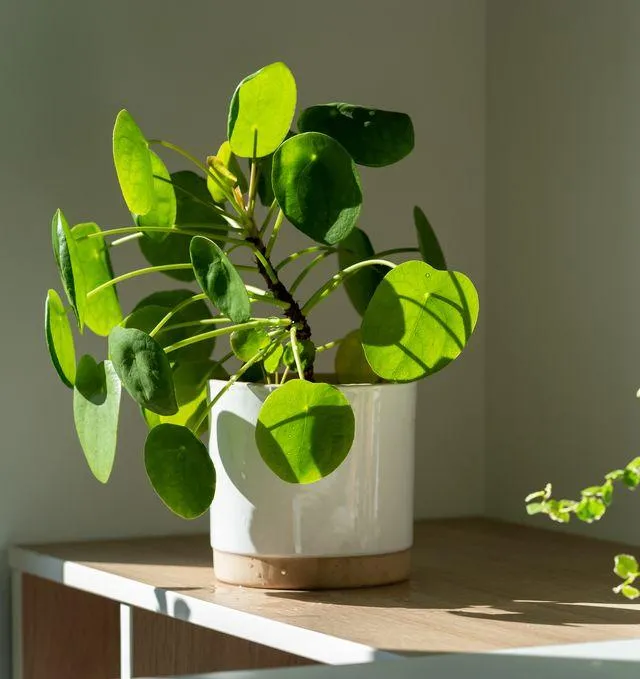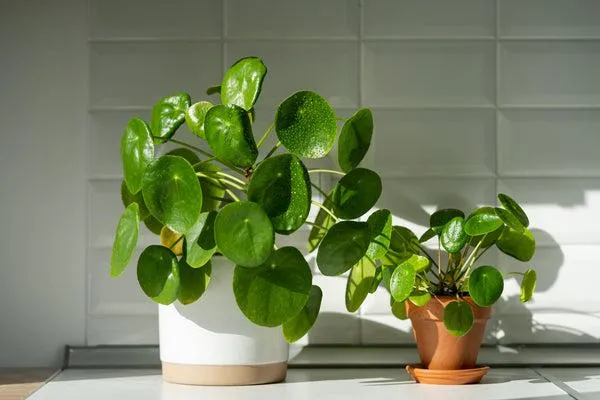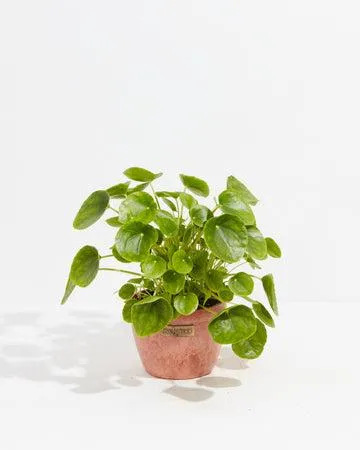Are Pilea Plants Toxic to Cats? A Comprehensive Guide
If you have a pilea plant in your home and a furry feline friend, you may be wondering – are these attractive houseplants safe to have around cats? In this detailed article, I’ll explore the question of whether pilea toxicity is a concern when it comes to our four-legged friends.
What Is a Pilea Plant?
For starters, let’s talk a bit about pilea plants – commonly known as the Chinese money plant or aluminum plant. These flowering houseplants come from Southeast Asia and feature neat circular or oval-shaped leaves with striking colors and patterns. Their leaves may be green, silver, red, or even cream and pink depending on the variety. Pilea are versatile, low-maintenance plants that add gorgeous visual interest to indoor spaces. No wonder they’ve become popular houseplants!
Pilea Toxicity and Common Signs of Poisoning in Cats
The main concern regarding pileas and cats centers around potential toxicity if consumed. All parts of the pilea plant – including leaves, stems, flowers and roots – contain calcium oxalate crystals. While harmless to humans, calcium oxalates can cause some issues if significant enough amounts are ingested by pets. According to the ASPCA Animal Poison Control Center, common signs of calcium oxalate poisoning in cats include:
- Mouth irritation or swelling
- Drooling
- Vomiting
- Diarrhea
- Loss of appetite
- Depression or lethargy
More severe cases could potentially lead to kidney damage over time from accumulated crystal deposits. So in theory, pileas pose some toxicity risk for curious kitties. But is it a major concern in typical household conditions? Let’s take a closer look.

Are Most Cats Likely to Eat Pilea Plants?
From my experience owning both cats and pileas, I’ve found cats have little natural interest in these plants. The sharp, tiny calcium oxalate crystals in pilea tissues act as an effective deterrent against consumption. Strong mouth irritation would kick in before a cat could ingest a dangerous quantity. While it’s not impossible for a mischievous munchkin to nibble a leaf, in general pileas don’t present the tempting fern- or grass-like textures that some toxic plants offer.
At the same time, kittens and certain breeds known for chewing/mouthing behavior like Siamese cats may face higher curiosity levels. And an otherwise healthy cat undergoing stress or a medical issue impacting appetite could potentially be drawn to non-food substances more than usual. Nevertheless, the combination of an unappealing texture and deterrent crystals makes serious pilea poisoning a quite rare occurrence for typical housecats.
Ways to Cat-Proof Pilea Plants and Reduce Toxic Risks
While the toxicity concern with pileas may be relatively low, it’s still wise to take sensible precautions if you have curious cats in the home:
- Place pilea plants up high, such as on shelves or hanging planters that are inaccessible.
- Move plants out of rummage areas like around food/water bowls or litter trays where kitties often nibble.
- Use plant barriers around the base like decorative pebbles or grates to discourage swiping at foliage.
- Supervise young kittens or chewers more closely if you’ve noticed interest in houseplants before.
- Be aware of plants if you also have outdoor cats roaming – they face higher toxicity risks from nibbling.
With some cat-proofing adjustments, you can keep your pilea’s flashy style on display safely alongside furry friends! Consider designating a cat-free plant zone if your kitty still shows chewing curiosity despite deterrent barriers.

Ways to Reduce Toxicity if Ingestion Occurs
Of course, life with cats can be unpredictable. If you notice pilea plant nibbling or suspect any concerning ingestion, here are tips from my experience as a pet owner:
- Stay calm, move the cat away from any remaining access to the plant.
- Induce vomiting only if you witnessed the ingestion within the past hour – water or hydrogen peroxide work as safe vomit-inducers.
- Contact your vet or an animal poison control hotline immediately for advice on next steps based on signs and amount possibly consumed.
- Be prepared to monitor closely for any possible symptoms like drooling, vomiting, or changes in litterbox habits that often appear within 24 hours.
- Take a sample of the plant with you to the vet visit for positive plant identification and proper toxicity evaluation.
With speedy response, the prognosis remains good for most curious nibbling incidents involving moderate amounts of pilea ingestion in otherwise healthy cats. Severe kidney crystals may still develop months later in extremely rare cases. So annual urine checks provide reassurance when pilea cohabitation occurs.
Final Thoughts on Pilea Toxicity Risks for Cats
Hopefully this guide has helped address your Intention of understanding pilea toxicity concerns for feline friends! In summary, while calcium oxalate crystals in pilea plants can potentially cause some minor issues if a substantial amount is ingested, the toxicity risks for typical housecats under normal indoor conditions appear quite low. With a few sensible precautions to cat-proof plants from overly-curious kitties, pilea poisoning incidents seem fairly uncommon. As always, preventive measures and caution are wise when living harmoniously with both houseplants and pets. What do you think – does this help explain if you can safely keep pileas around cats based on toxicity risks? Let me know if you need any clarification on these key considerations!
Is Pilea Plant Toxic to Cats?
| Plant Part | Toxicity Level | Symptoms |
|---|---|---|
| Leaves | Low | Mild stomach upset |
| Stems | Low | Mild stomach upset |
| Flowers | Low | Mild stomach upset |
| Bulbs/Tubers | Potentially Toxic | Vomiting, diarrhea, weakness |
| Whole Plant | Low | Mild to moderate stomach upset |
FAQ
-
Are pilea plants toxic to cats?
Yes, pilea plants are somewhat dangerous for cats. The parts of the plant that are most poisonous are the leaves and stems. If a cat eats any part of a pilea, it could cause vomiting or diarrhea.

-
What are the signs that a cat has eaten a pilea?
Some signs that a cat may have eaten a pilea plant include drooling, lack of appetite, vomiting, stomach pain, or diarrhea. The cat might also seem weak or lethargic. If you notice any of these symptoms after being around a pilea plant, it’s best to contact your vet right away.
-
How dangerous are pilea plants for cats?
While pilea plants are poisonous to cats, their toxicity seems to be fairly mild in most cases. The main danger is from vomiting and diarrhea which can possibly lead to dehydration if left untreated. However, it depends a lot on how much of the plant was eaten. A nibble is likely not a big deal, but eating a large amount could require vet care.
-
What should you do if your cat eats a pilea?
If you see your cat eat any part of a pilea, you’ll want to contact your vet promptly. They may want to induce vomiting or have you monitor the cat. Be prepared to describe symptoms and how much was eaten. It’s also a good idea to take a picture of the plant for ID by the vet. They can determine the best treatment like fluids if diarrhea occurs. Calling early improves outcomes.
-
Can people get sick from pilea plants?
While pilea plants are low in toxicity for humans, it’s best not to eat any parts of the plant since some mild stomach upset could potentially result. The plant contains oxalate crystals that aren’t good for us in large amounts. However, brief skin contact is not a problem. You’d basically have to try eating a bunch to feel ill effects. It’s really more of a concern for pets that may ingest leaves or stems.

-
Is it okay to have a pilea plant if you have cats?
You can have a pilea plant with cats as long as you take proper precautions. Keep it up high where cats can’t reach the leaves and stems. Also, make sure to wash your hands thoroughly after touching it in case any residue gets ingested later from petting. Monitor your cats when first bringing the plant home in case of initial curiosity. Nevertheless, it’s always safest to choose a non-toxic plant if possible with pets in the home.
